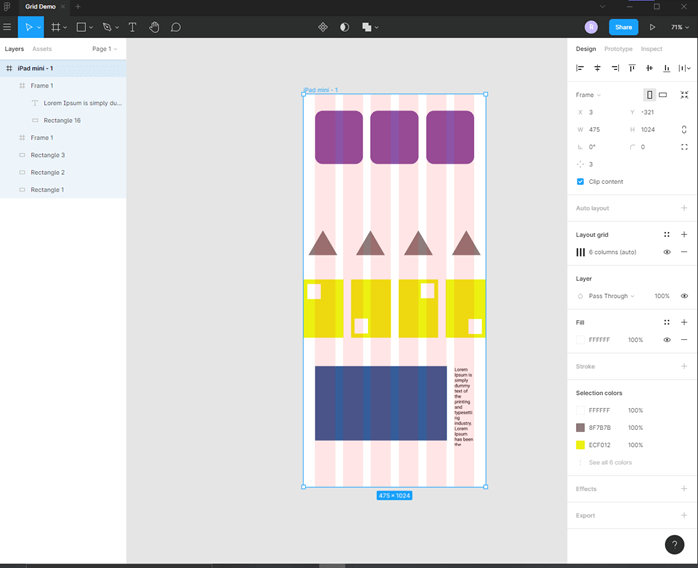
So make sure to subscribe or visit moonlearning. So you can keep the “left & right” setting in constraints to lock the auto-layout object to your columns, and it is fully responsive.ĬSS Grids can be set up with pure auto-layout, and I will be back with some examples of this particular case soon. Then within this parent frame, you can add auto-layout to all elements. Simply keep your frames with the grids as they are (so do not add auto layout on the parent frame holding the grid!). I was a bit worried about this as all my files are set up with responsive grids. By the way, if you want to keep on using grids with constraints. Apparently, it is in the making so I will be patient and resize manually for now. Now I have all this great responsive setup and tools but see my image ratio falling apart every time I resize, which is such a shame. I needed this one so badly for 90% of my projects. I am still missing one thing though: Locking aspect ratios for images! > It all comes down To what your needs are – If you need something Quick And easy That will get The Job done – Constraints may Be your best bet But If You need more control Over how your element behaves When being resized -Auto Layout may serve You better.5. What this means Is effectively designing your components In such A way That they look good at any size – By utilizing proper spacing/alignment features And making sure your elements scale nicely with one another. The last way (and probably most effective), To make sure your components are truly responsive – Is by utilizing responsive design principles (RDPs). Setting up auto layout features for each individual element on your design can take some time And if not done correctly -can lead To some strange results. The downside of using Auto Layout, however Is that it can be time-consuming. For example, you could specify that two buttons should always be the same width, or that one button should be twice as wide as another button. There are several ways to do this: using Figma's auto layouts and Anima’s breakpoints. This allows you to specify relationships between different elements on a frame, and how they should resize when the frame is resized. Updated over a week ago Using Anima in Figma, you can now create fully responsive designs that can be resized and suitable for any screen size, in your web browser and generated code. The downside of using Constraints is that it can be trickyto get them set up correctly, and they can sometimes result in unexpected behaviour.Īnother wayto make a component responsive is to use Auto Layout. For example, you could specify that a button should always be the same width as the frame, or that it should resize proportionally with the frame. This allows you to specify how a component should resize when the frame is resized. One wayto make a component responsive is to use the Constraints feature. There are a few different ways to do this, each with its own benefits and drawbacks.
#Figma responsive resize how to#
How Do You Make a Component Responsive in Figma?Īs the world increasingly moves towards responsive design, it is important to know how to make components responsive in Figma. And if you want a component that looks great at any size, then using responsive design principles might be the best option.

If you need more control over how the component behaves when resized, then Auto Layout might be a better option.

If you need a quick and easy way to make a component responsive, then Constraints might be the best option. So, which approach should you use? It depends on your needs. The downside of this approach is that it can take more time upfront to design the component, but it will usually result in a better-looking end product. This means creating a component that looks good at any size, and using spacing and alignment properties to ensure that it looks good when resized. The last way to make a component responsive is to use responsive design principles when creating the component. Now, pick again the frame tool and draw a new frame within our Parent Frame with the dimensions of 800W 1000H. Set the Width to Fixed width and Height to Fixed height. Next, head to the Resizing section under the Auto layout panel. The downside of using Auto Layout is that it can be time-consuming to set up, and it can sometimes be difficult to understand how it works. Select the Alignment and padding icon in the right corner of the Auto layout section and set it to center. This allows you to specify relationships between different elements on a frame, and how they should resize when the frame is resized.įor example, you could specify that two buttons should always be the same width, or that one button should be twice as wide as another button. Another way to make a component responsive is to use the Auto Layout feature.


 0 kommentar(er)
0 kommentar(er)
